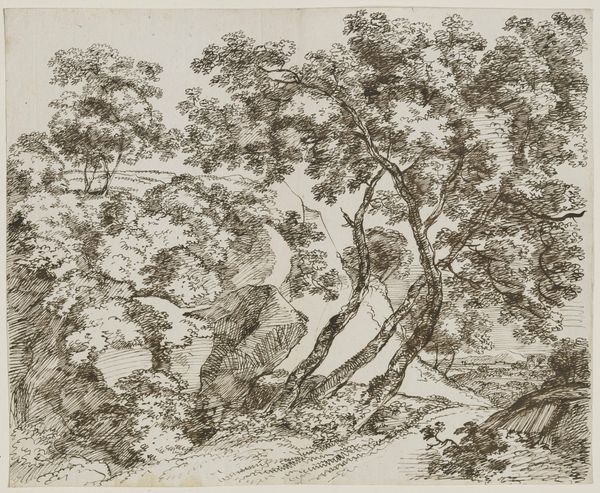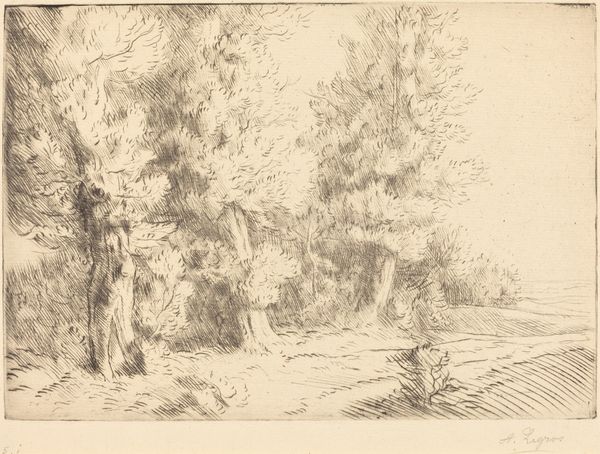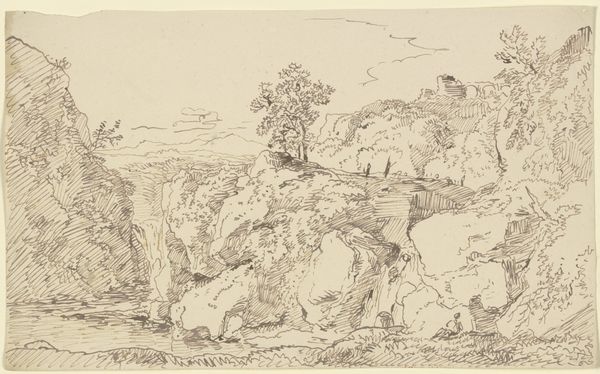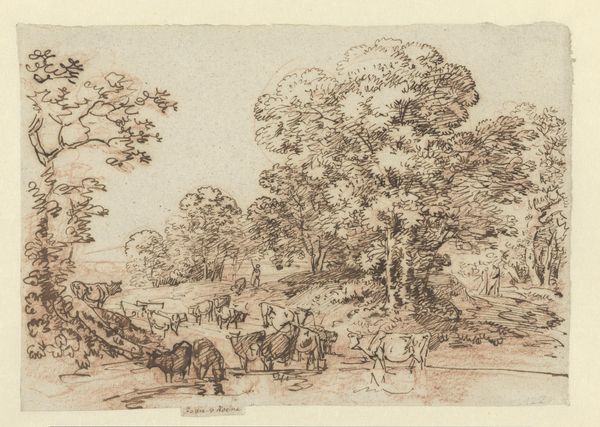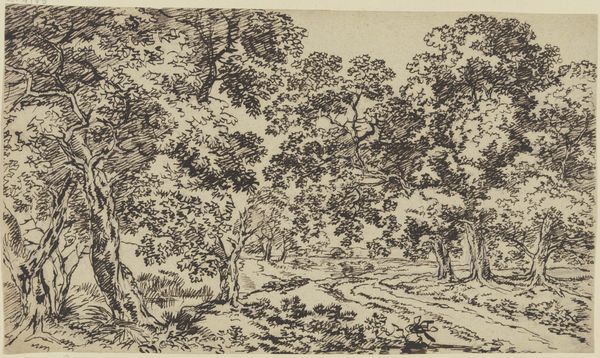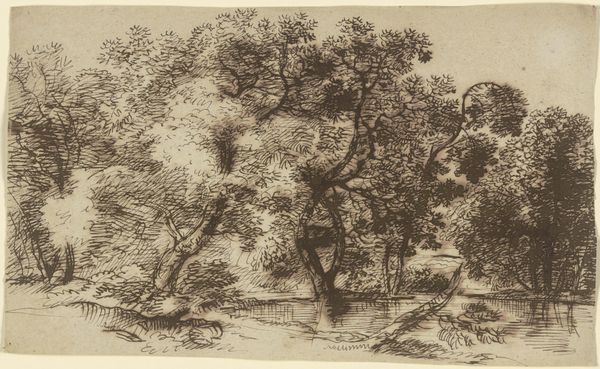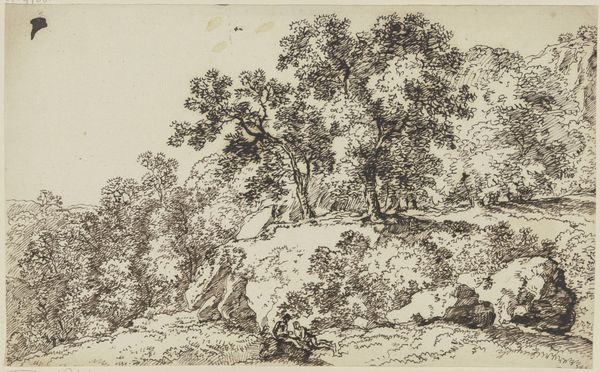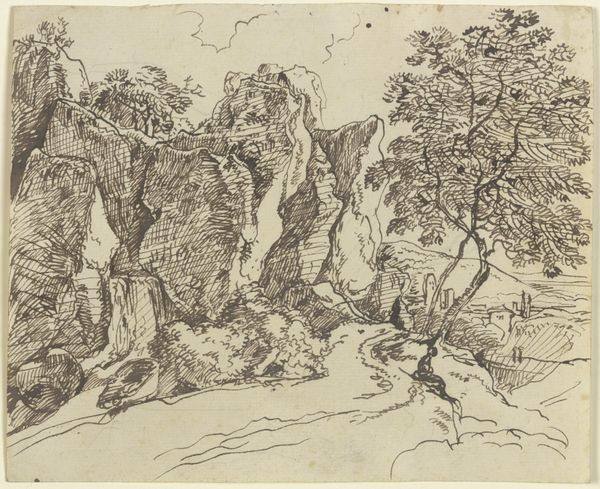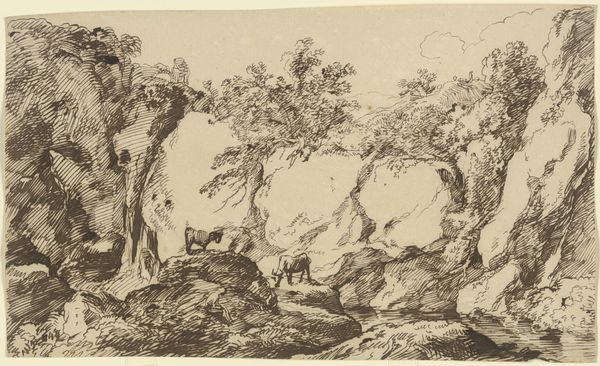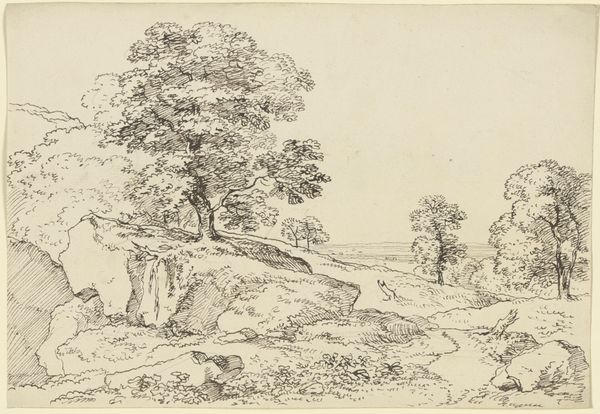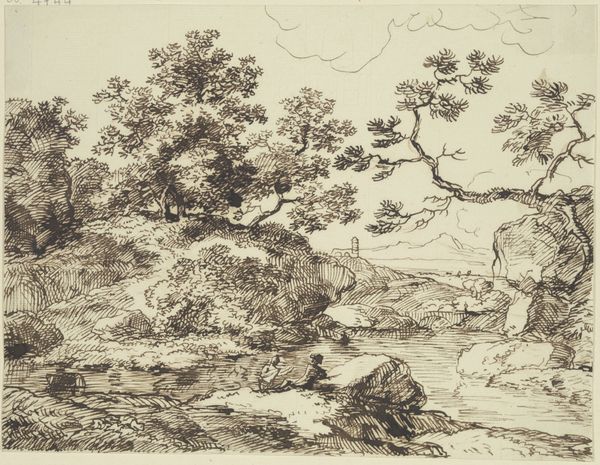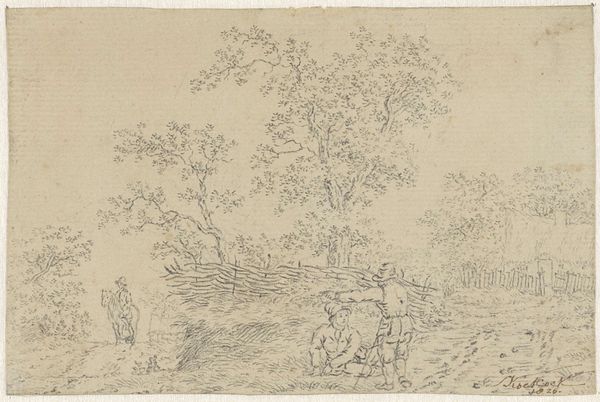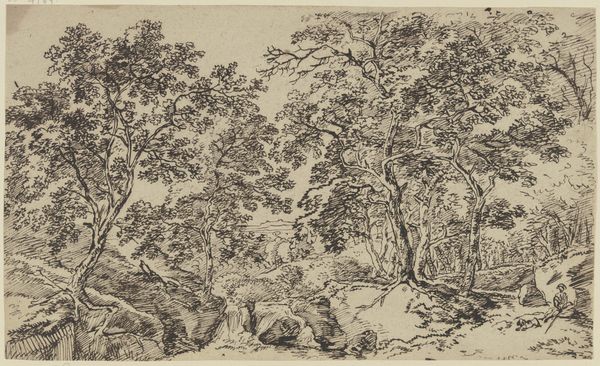
_Die stürmen nach Beute begierig _ Über Gestein und Felsen und unzugängliche Klippen, _ Da, wo schwierig der Weg, und da, wo keiner gebahnt ist_ - Aktaion, von seinen Hunden gehetzt
0:00
0:00
drawing, ink
#
drawing
#
ink drawing
#
narrative-art
#
landscape
#
figuration
#
ink
#
romanticism
#
history-painting
Copyright: Public Domain
Curator: Let's explore this drawing, powerfully titled "_Die stürmen nach Beute begierig _ Über Gestein und Felsen und unzugängliche Klippen, _ Da, wo schwierig der Weg, und da, wo keiner gebahnt ist_ - Aktaion, von seinen Hunden gehetzt" by Franz Kobell, held here at the Städel Museum. The medium is listed as ink. Editor: Oh, wow. My first impression is pure kinetic energy! Look at the frenzy of the lines, the desperation in the figure's pose... it's viscerally upsetting. You can practically hear the panting and the frantic scramble. Curator: Absolutely. The artist has captured the terror of the mythological figure Aktaion, hunted by his own hounds after witnessing Diana bathing. Kobell uses line work to portray not only the physical landscape but also Aktaion's internal turmoil, trapped as he is. Consider the patriarchal overtones of this scene: Aktaion’s punishment speaks to anxieties about male gaze, about power and transgression. Editor: The dogs are like dark shadows unleashed, their hunger almost palpable. The cross-hatching builds a claustrophobic sense of being trapped, of the inevitability of violence. What gets me is how small the figure is in contrast to the vast, unforgiving landscape. It heightens his vulnerability, doesn’t it? Makes his fate seem pre-ordained by forces much larger than himself. Curator: Indeed. This work pulls together landscape and figuration in order to heighten its dramatic impact. I find it particularly compelling when situated within artistic movements towards Romanticism, where we can see representations of nature mirroring inner states. The drawing style lends to that notion of emotional excess through expressive handling. This scene of mythological justice can also be examined through questions around ecological exploitation, the inherent violence in disrupting natural boundaries. Editor: I agree entirely. And the open space at the top - like a breath held. It’s kind of haunting, really. What this piece does, is not romanticize anything, not the hunt, not the wilderness, but only human vulnerability facing the indifference of nature, echoing through our myths and psyche even now. Curator: Yes, seeing how the historical weight intertwines so dynamically here offers some compelling narratives. Editor: Agreed, it lingers in the mind well after viewing.
Comments
No comments
Be the first to comment and join the conversation on the ultimate creative platform.
